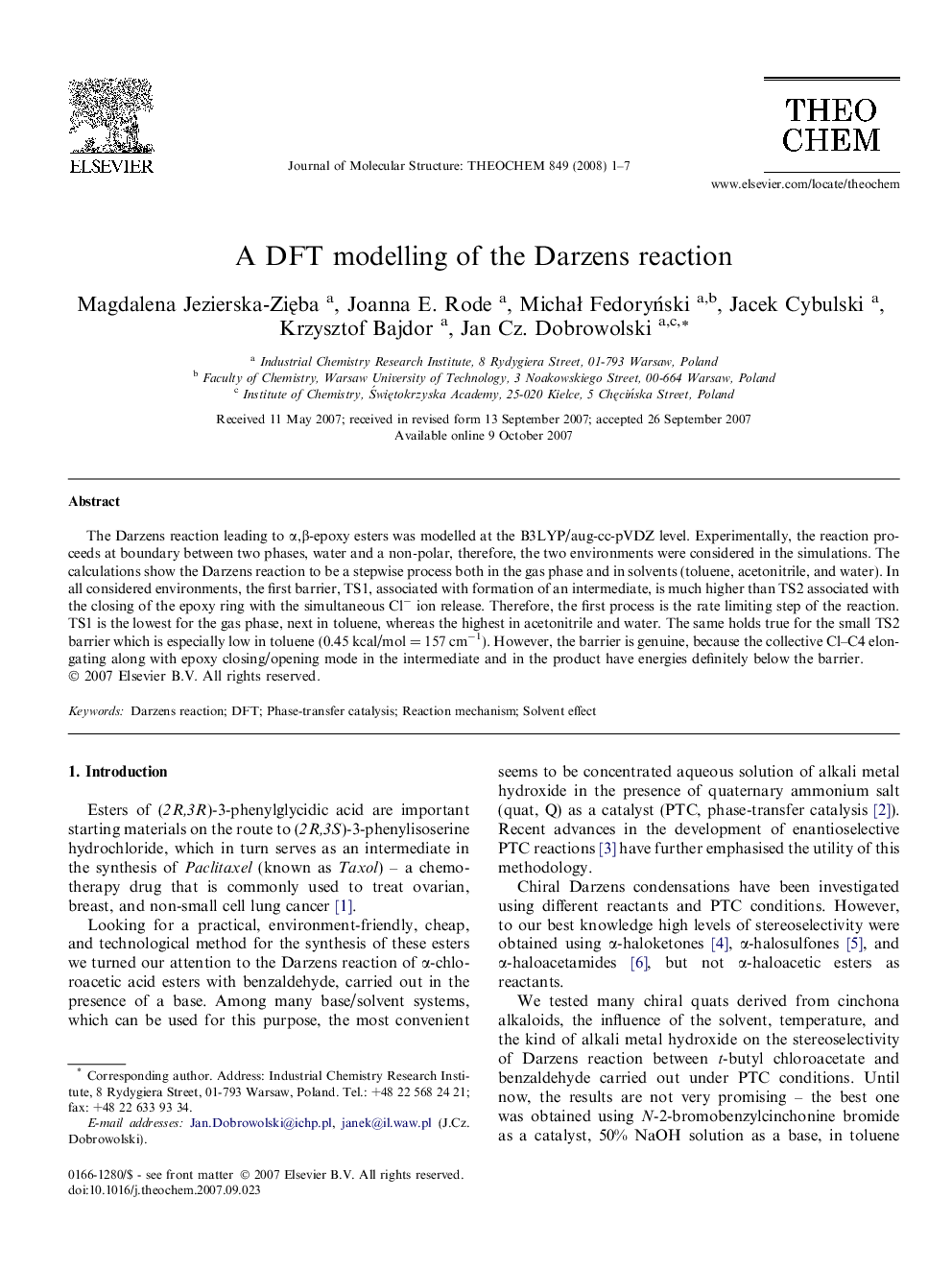| Article ID | Journal | Published Year | Pages | File Type |
|---|---|---|---|---|
| 5418621 | Journal of Molecular Structure: THEOCHEM | 2008 | 7 Pages |
Abstract
The Darzens reaction leading to α,β-epoxy esters was modelled at the B3LYP/aug-cc-pVDZ level. Experimentally, the reaction proceeds at boundary between two phases, water and a non-polar, therefore, the two environments were considered in the simulations. The calculations show the Darzens reaction to be a stepwise process both in the gas phase and in solvents (toluene, acetonitrile, and water). In all considered environments, the first barrier, TS1, associated with formation of an intermediate, is much higher than TS2 associated with the closing of the epoxy ring with the simultaneous Clâ ion release. Therefore, the first process is the rate limiting step of the reaction. TS1 is the lowest for the gas phase, next in toluene, whereas the highest in acetonitrile and water. The same holds true for the small TS2 barrier which is especially low in toluene (0.45 kcal/mol = 157 cmâ1). However, the barrier is genuine, because the collective Cl-C4 elongating along with epoxy closing/opening mode in the intermediate and in the product have energies definitely below the barrier.
Related Topics
Physical Sciences and Engineering
Chemistry
Physical and Theoretical Chemistry
Authors
Magdalena Jezierska-ZiÄba, Joanna E. Rode, MichaÅ FedoryÅski, Jacek Cybulski, Krzysztof Bajdor, Jan Cz. Dobrowolski,
